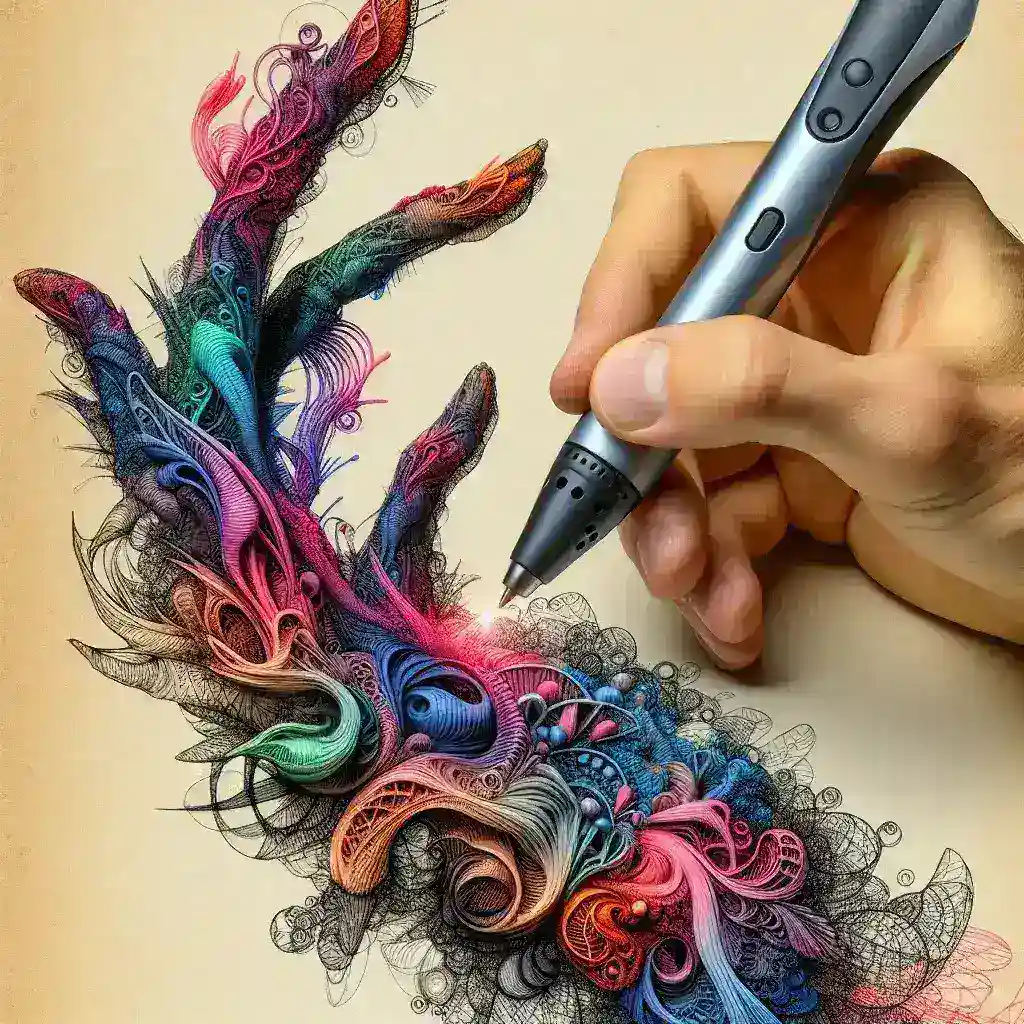Mixed media art has long been a cornerstone of contemporary art, blending various mediums and techniques to create rich and complex artworks. As technology advances, new tools are continually being introduced to the art world, offering artists innovative ways to express their creativity. One such tool is the 3D pen—a handheld device that extrudes heated plastic filament, allowing artists to «draw» in three dimensions. But can a 3D pen be effectively used in mixed media art? The answer is a resounding yes, and here’s why.
The Basics of a 3D Pen
A 3D pen operates similar to a 3D printer but in a much more manual and flexible manner. The pen heats a plastic filament that comes in various colors and types and extrudes it through a nozzle. Artists can manipulate the extruded plastic to create intricate designs, structures, and even functional objects. The key benefits include:
- Portability
- Ease of use
- Instant material hardening
- Diverse filament options
Table: Different Types of Filaments Used with 3D Pens
| Type of Filament | Characteristics |
|---|---|
| PLA (Polylactic Acid) | Eco-friendly, easy to use, less prone to warping |
| ABS (Acrylonitrile Butadiene Styrene) | Durable, high resistance to heat |
| PETG (Polyethylene Terephthalate Glycol) | Strong, food-safe |
| Wood Filament | Contains wood fibers, offers a natural look |
| Metallic Filament | Contains metal elements, gives a metallic finish |
Integration with Traditional Media
The real magic of using a 3D pen in mixed media art lies in its ability to integrate seamlessly with traditional artistic mediums. From painting and drawing to sculpting and textile work, a 3D pen can complement other materials and techniques to create multi-layered, complex artworks. For example, an artist can build a 3D framework using a 3D pen and then paint over it to add layers of texture and depth. The possibilities are endless:
- Painting: 3D elements can be added to canvas paintings for a raised, tactile effect.
- Drawing: Enhance line art with 3D textures and forms.
- Sculpting: Create delicate, intricate sculptures that traditional methods may not allow.
- Textile Art: Reinforce or embellish fabrics with 3D elements.
Artistic Possibilities and Techniques
Incorporating a 3D pen into mixed media art opens up a plethora of new artistic avenues. Here are some techniques artists can explore:
Creating Textures and Patterns
3D pens can be used to add intricate textures and patterns that would be difficult to achieve with traditional methods. By layering the filament, artists can mimic natural textures such as wood grain, fur, and even water ripples.
Building Structural Elements
One of the primary advantages of using a 3D pen is the ability to build three-dimensional structures. This can be particularly useful in sculptures, architectural models, and other art forms that require a stable framework.
Combining Various Filaments
Different types of filaments can be used in a single artwork to create contrasting textures and colors. For example, a metallic filament can be used alongside a wood filament to create a piece that has both the luster of metal and the warmth of wood.
Case Studies: Artists Using 3D Pens
Several contemporary artists have successfully integrated 3D pens into their mixed media works:
Sarah Jones: Mixed Media Sculptures
Sarah combines traditional sculpting materials like clay with 3D pen elements to create intricate, lifelike sculptures. Her work often features fine details that would be impossible to achieve without a 3D pen.
John Doe: Architectural Models
John employs a 3D pen to construct complex architectural models. The pen allows him to create detailed frameworks and supports that can then be painted or embellished with other materials.
Challenges and Considerations
While the benefits of using a 3D pen in mixed media art are plentiful, there are also some challenges to consider:
- Learning Curve: Mastering the use of a 3D pen can take time, especially for artists used to traditional methods.
- Material Cost: High-quality filament can be expensive, adding to the overall cost of the artwork.
- Health and Safety: Proper ventilation is essential when using a 3D pen to avoid inhaling fumes from the heated plastic.
Conclusion
In conclusion, a 3D pen can be a powerful tool for mixed media artists, offering new ways to combine different materials and techniques. Whether you’re adding texture to a painting, constructing a sculpture, or building an architectural model, the possibilities are limited only by your imagination. As with any new tool, there is a learning curve, but the rewards far outweigh the challenges. Embrace the future of art by incorporating a 3D pen into your mixed media toolkit.

